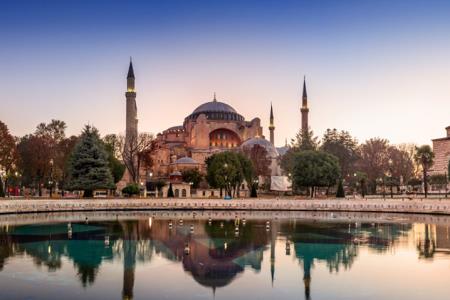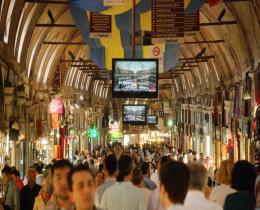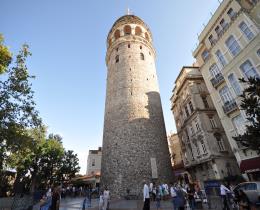Dolmabahce Palace (Dolmabahçe Sarayı)
Dolmabahce Palace (Dolmabahçe Sarayı)
Dolmabahçe Palace located in the Beşiktaş district of Istanbul, Turkey, on the European coastline of the Bosphorus strait, served as the main administrative center of the Ottoman Empire from 1856 to 1922, apart from a 22-year interval (1887–1909) in whichYıldız Palace was used.
Dolmabahçe Palace (Dolmabahçe Sarayı) - Beşiktaş, Istanbul
Dolmabahçe Palace was built by Sultan Abdulmecid (1839-1861) who was the thirty first Ottoman Sultan. The palace, whose construction commenced on June 13th, 1843, was brought into use on June 7th, 1856, upon completion of surrounding walls. The palace mainly consists of three parts, named as the Imperial Mabeyn (State Apartments), Muayede Salon (Ceremonial Hall) and the Imperial Harem. The Imperial Mabeyn was allocated for administrative affairs of the state, Imperial Harem was allocated for private lives of the sultan and his family and the Muayede Salon, placed between these two sections, was allocated for exchanging of bayram greetings of sultan with dignitary statesmen and for some important state ceremonies. The main building is three storey including the basement on the side which is parallel to sea and it is four storey at the land side involving the Harem quarters with the musandıra (garret) storeys. Evident Western influences, observed at the style, details and ornaments, are reflections of the esthetical values, changed through the last period of the Imperial. On the other hand, it is a building complex in which traditional Turkish House style was applied on a large scale with respect to space organization and relations between the rooms and salons. The outside of the building is mode of stone, the interior walls are made of brick and the floors are made of wood. Electricity and central heating were installed in 1910-12 to the place which is open to the contemporary technology. It has a usable floor area of 45,000 square meters, 285 rooms, 44 reception rooms and 6 hamams. The Mabeyn in which the sultan carries out state affairs is the most important section of Dolmabahçe Palace in terms of its function and magnificence. The Medhal Salon at the entrance, the Crystal Staircase serving as connection with the upper storey and carries protocol characteristics, the Süfera Hall where foreign ambassadors were entertained and the Red Chamber, used by the sultan for reception of the visitors, are all decorated and furnished in a manner emphasizing the historical magnificience of the empire. The Zülvecheyn Salon on the upper floor serves as an entrance to the apartment reserved privately for the sultan in the Mabeyn. In this apartment, there are study and rest rooms and a gorgeous hamam with marbles brought from Egypt, in which Sultan lives his daily life. The library located in the same section and which consists of the books of the Caliph Abdulmecid is one of the outstanding rooms. The Muayede Hall, situated between the Harem and the Mabeyn sections is the highest and most magnificent hall of Dolmabahçe Palace. This hall apparently distinguishes from the other sections of the palace with its area exceeding 2000 square meters, 56 columns, a dome of 36 meters high and an English chandelier which is 4.5 tons. The chandelier of the Hall was ordered and bought from England by Sultan Abdulmecid. Although Dolmabahçe Palace is one under Western influence and was constructed modeling the European palaces, attention was paid to build the Harem as a separate section -although not strictly as in the past- considering its functional construction and indoor structure. However, contrary to the Topkapı Palace, Harem isn’t a building or building complex, set apart from the Palace anymore; but it is a special living unit, placed under the same roof within the same building complex. Dolmabahçe Palace, hosted 6 sultans at intervals and also the last Ottoman Caliph Abdulmecid Efendi from 1856 when it was put into service, until the abolition of the caliphate in 1924. The palace was used as Presidency office between 1927-1949. Gazi Mustafa Kemal Atatürk, the founder of our Republic, used Dolmabahçe Palace for his studies at İstanbul between 1927-1938 and died in this palace. The Palace which was partially open to protocol and visits between 1926-1984 and was opened to visit as a “museum-palace” from 1984.

 English
English Español
Español Deutsch
Deutsch عربي
عربي  Русский
Русский



















